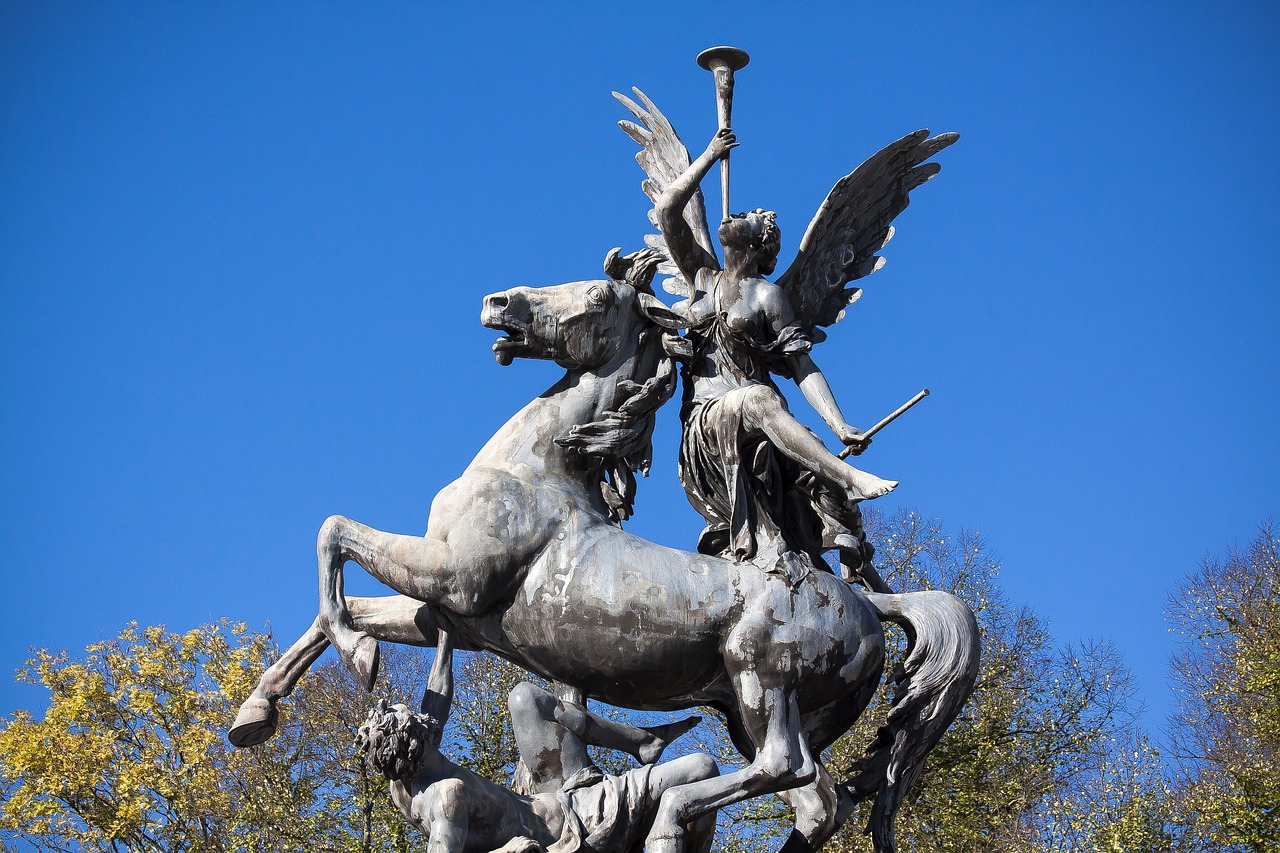The Mythical Wings of Pegasus
Pegasus, a legendary immortal steed, was a winged horse born from the severed neck of Medusa, the infamous Gorgon. His origins trace back to Poseidon and Medusa, symbolizing the union of divine power and earthly elements. The story unfolds with Bellerophon, the valiant hero who tamed Pegasus and rode him in a fierce battle against the monstrosity known as the Chimera, a terrifying creature that breathed fire. In his pursuits, Bellerophon aspired to ascend to the heavens with Pegasus. However, Zeus intervened, causing Pegasus to throw Bellerophon back down to earth, leading to his disgrace. Following this, Pegasus flew to Olympus, where he dedicated himself to serving Zeus, becoming the divine bearer of his thunderbolts.
The significance of Pegasus extends into the celestial realm, where he is immortalized as a constellation. His appearance in the skies heralds the season of spring, signifying renewal and the onset of turbulent thunderstorms. The name Pegasus is derived from the Greek word “pêgê,” meaning “spring” or “source,” symbolizing his association with waters and springs. This lineage also reflects in his myth, as his birth from the Gorgon Medusa ties him to various water sources.
Pedigree of Pegasus
Parentage
- Poseidon & Medusa: Found in multiple references including Hesiod’s Theogony and Ovid’s Metamorphoses.
- Medusa (alone): Also recognized in certain interpretations, indicating the complex relationships woven into Greek myth.
The Birth of Pegasus
The mythology surrounding Pegasus is beautifully illustrated across various ancient texts. Hesiod describes how Pegasus sprang forth from Medusa’s blood after Perseus beheaded her. This miraculous birth encapsulates the idea that from a tragic event, beauty and strength can arise. Pseudo-Apollodorus recounts that alongside Pegasus, another being named Chrysaor emerged, depicting Poseidon’s dual nature in creation: one manifesting as a magnificent horse and the other as a warrior.
Pegasus also shares a profound connection with the Muses, particularly through the sacred spring of Hippocrene. According to legend, this spring was created when Pegasus struck the ground with his hoof on Mount Helicon, making the waters flow forth. The Muses claimed this spring, bestowing creativity and inspiration upon those who drank from its waters, further cementing Pegasus’s legacy as a symbol of artistic inspiration.
Bellerophon and the Chimera
Bellerophon, longing for fame and valor, sought out the winged horse Pegasus at the well of Peirene. With divine guidance from Athena, who appeared in a dream, he acquired a golden bridle, which he used to tame Pegasus. Together, the duo faced and vanquished the Chimera, an achievement that elevated Bellerophon’s status among mortals. However, the ambition to ascend to the heavens led to Bellerophon’s downfall after he was cast down by Pegasus, resulting in a tragic ending despite their previous glory.
This narrative highlights the ultimate theme often present in Greek mythology: the interplay of hubris and humility, often leading to severe consequences.
Constellation and Legacy
Pegasus’s stature among the stars as a constellation symbolizes his immortality and ongoing influence in mythology. Numerous writers, including Pindar and Ovid, underwent efforts to capture his essence, portraying him as a celestial being, integral to the cosmos created by the gods. The constellation itself serves as a reminder of his strength, beauty, and the reverberating impact of myths and legends in the human experience.
Additionally, the portrayal of winged horses like Pegasus in ancient Greek and Roman art is noteworthy. These artistic representations not only celebrate Pegasus’s nature but also illustrate the grandeur of the myths, forming a bridge between the divine and human realms.
Pegasus’s legacy, laced with ideas of inspiration, divinity, and heroism, remains prevalent throughout time. His multifaceted narrative continues to inspire various forms of art and literature, ensuring that his story and significance endure beyond the confines of myth.



